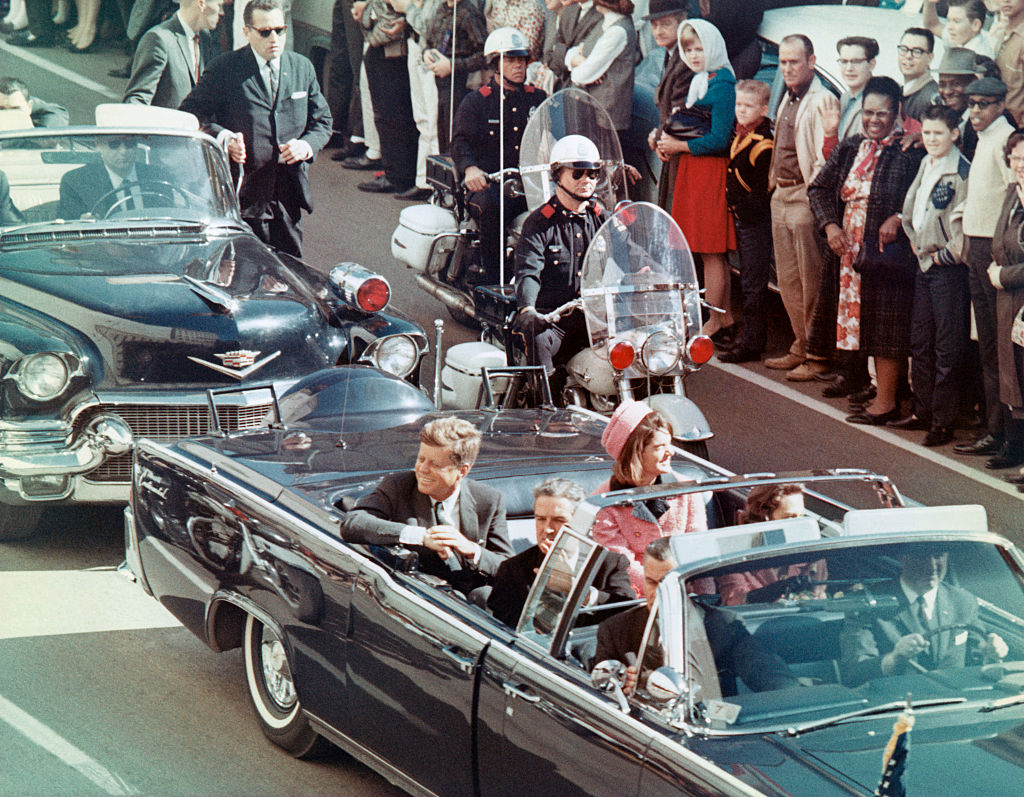A former U.S. Secret Service agent is calling into question the prevailing theory of the assassination of President John F. Kennedy, casting doubt on the Warren Commission’s single-bullet theory.

Paul Landis, who witnessed the assassination and long believed Lee Harvey Oswald acted alone when he killed Kennedy, says he’s beginning to have his doubts about the one-shooter theory.
“I’m beginning to doubt myself,” Landis told The New York Times. “Now, I begin to wonder.”
This newfound skepticism, he told the outlet, comes from discrepancies between his own experience on the day of the 1963 slaying in Dallas, Texas, and what was found by the Warren Commission.
The Warren Commission, ordered by then-President Lyndon B. Johnson in 1964, determined that a bullet struck Kennedy from behind before exiting through his throat and continuing forward, hitting Texas Gov. John Connally in the back, thigh, chest and wrist.
However, Landis now says he moved evidence and put one of the bullets believed to have killed Kennedy in his pocket before placing it on the president’s hospital gurney.

Landis said he found the bullet at the time of the crime, stuck in the seat behind where Kennedy was sitting when the Lincoln Continental convertible arrived at hospital.
“I was just afraid that — it was a piece of evidence, that I realized right away. Very important. And I didn’t want it to disappear or get lost. So it was, ‘Paul, you’ve got to make a decision,’ and I grabbed it,'” Landis told the Times.
Landis said he was worried someone might try to take the bullet as a souvenir, so he pocketed it and laid it next to the president on his stretcher, hoping it would help doctors determine what happened.
Now, Landis, who was travelling in a vehicle behind Kennedy that fateful day, says he thinks the bullet may have fallen out of Kennedy’s back as he was removed from the vehicle.
He also surmises that the bullet may have shifted onto Connally’s stretcher at one point when the two stretchers were placed next to each other, explaining how the bullet was linked to Connally’s injuries in the first place.

“I didn’t think about it at all for about 45 years, and at that point it was March 2014 and I started thinking that maybe it was time that I told my story,” Landis told People.
“That was really the beginning… everything was just kind of buried. I didn’t think about it. Nobody ever asked me,” he told the outlet.
Landis will certainly have more to say in his upcoming his memoir, The Final Witness: A Kennedy Secret Service Agent Breaks His Silence After 60 Years.
He tells People that while he wrote two reports in the wake of the incident, he says they were both brief and he doesn’t remember the details of what was written, citing shock and sleep deprivation in the days following the tragic event.
“I just figured, well, I’m going to be questioned by the Warren Commission and I can tell my whole story then,” Landis says. “And that time never came.”
It wasn’t until 2014, while reading the book Six Seconds in Dallas, that he was reminded of the bullet. The book described the evidence as being found on Connally’s gurney.
Landis told the Times he is not trying to add fuel to any existing conspiracy theories or promote a new one.
“There’s no goal at this point,” he said. “I just think it had been long enough that I needed to tell my story.”
The Final Witness will hit bookstore shelves on Oct. 10. Its release comes less than a year after Biden’s White House directed the National Archives to release about 12,000 documents relating to the assassination.












Comments